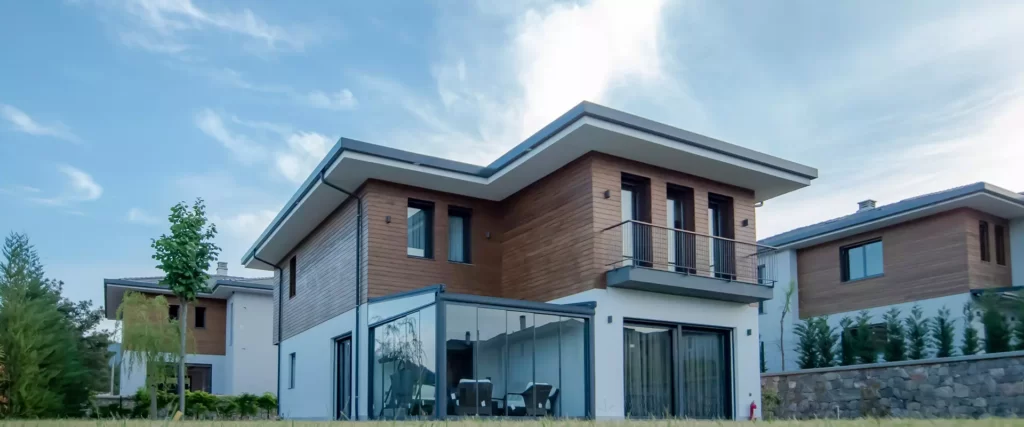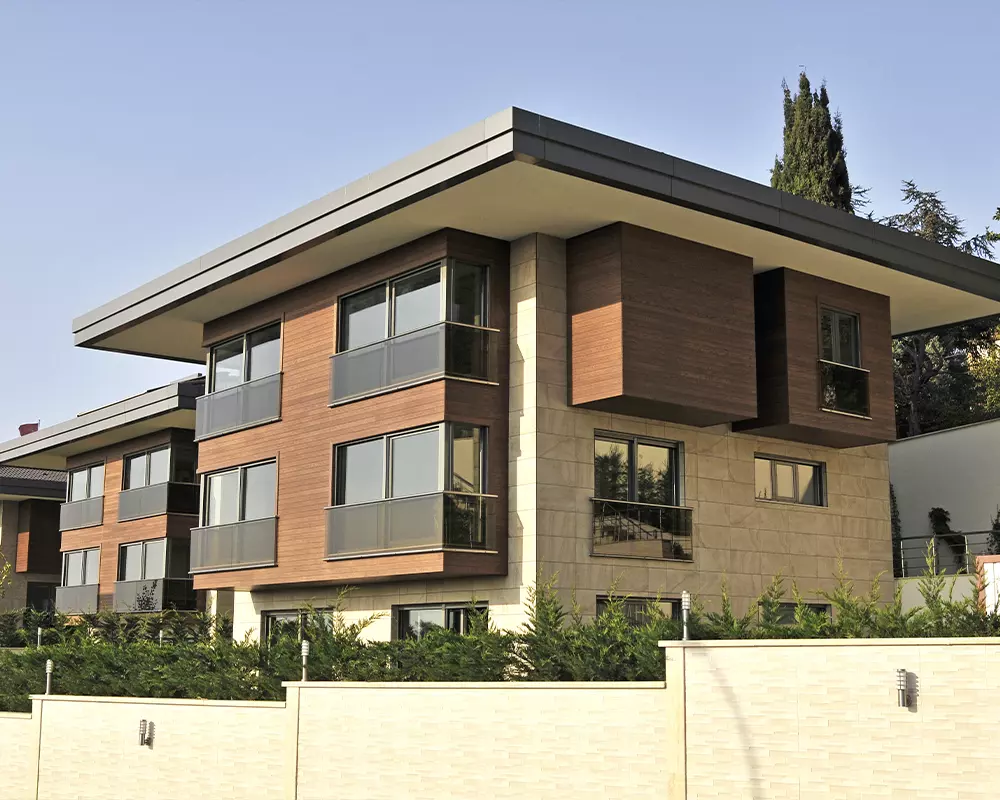Exterior cladding is a vital element in contemporary architecture. It not only enhances the aesthetic appeal but also shields the building from harsh weather conditions, to help ensure its durability and longevity. Among the different choices, thermally modified wood cladding has gained popularity due to its natural look, resilience, and eco-friendliness.
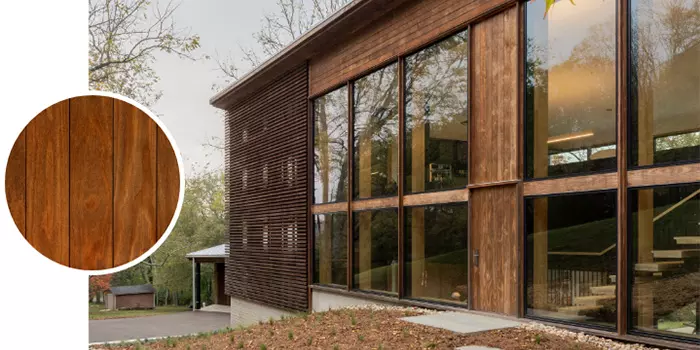
The Evolution of Thermally Modified Cladding
Historically, exterior cladding materials ranged from natural elements like stone and wood to man-made products such as vinyl or fiber cement, each reflecting the available technology and trends of their respective eras.
However, with growing ecological concerns and advanced technological interventions, there has been a conscious shift toward materials that are not only aesthetically pleasing and functional, but also environmentally responsible. This transition paved the way for innovative solutions like thermally modified wood, for a significant evolution in cladding practices.
Understanding the Thermal Modification Process
The Thermo wood process is a precise method that turns regular wood into top-quality thermally modified lumber:
- It starts with kiln-drying the wood to eliminate any remaining moisture.
- Then, the dried wood is heated in a specialized chamber at temperatures above 180 degrees Celsius. During this stage, the wood is closely monitored to ensure even heating without combustion. The extreme temperatures fundamentally change the wood’s structural and chemical properties, to make it more resistant to decay and to add stability.
- After the heating phase, the wood is gradually cooled to stabilize the changes and prevent potential damage.
Benefits of Thermally Modified Wood Cladding
Choosing thermally modified wood cladding from Lumber Plus presents numerous advantages:
- The durability of this material is unparalleled, as it is capable of withstanding harsh weather conditions without compromising its form or appearance.
- Its resistance to rot, decay, and insect attacks further contributes to its low-maintenance nature, which makes it a cost-effective long-term investment.
- Thermally modified wood cladding is a champion of environmental sustainability.
The process eliminates the need for chemical preservatives, and the wood itself is sourced from responsibly managed forests, to assist in the reduction of the carbon footprint of construction projects.
Comparative Analysis of Cladding Materials
When it comes to choosing the right cladding material for your project, it’s essential to weigh the pros and cons of each option. Below, we provide a comprehensive comparison of thermally modified wood with other popular cladding materials:
Cost
While initial costs for thermally modified wood may be higher than vinyl or fiber cement, the long-term savings in maintenance and replacement costs make it a cost-effective choice over time.
Durability
Thermally modified wood outperforms other materials in durability. Its resistance to rot, decay, and insects, as well as its ability to withstand extreme weather conditions, places it a cut above the rest.
Maintenance
Unlike untreated wood that requires regular upkeep to maintain its appearance and durability, thermally modified wood is low-maintenance, and needs minimal care.
Environmental Impact
In this era of heightened ecological consciousness, thermally modified wood is a standout. The elimination of chemical preservatives and sourcing from responsibly managed forests gives it a significantly lower carbon footprint compared to other cladding materials.
Choosing the right cladding material is about more than just aesthetics; it’s about finding a solution that aligns with your values, meets your functional needs, and fits within your budget. Thermally modified wood cladding from Lumber Plus checks all of these boxes, which makes it an excellent choice for your next project.
Applications of Thermally Modified Wood Cladding

Thermally modified wood cladding can be applied to various exterior projects due to its versatility, durability, and aesthetic appeal. Here are some specific applications:
Residential Houses
One of the most common uses of thermally modified wood cladding is in residential homes. Its rich color and natural grain adds warmth and elegance to homes, to enhance curb appeal. The robust nature of the material ensures a long lifespan, which reduces the need for frequent replacement.
Commercial Buildings
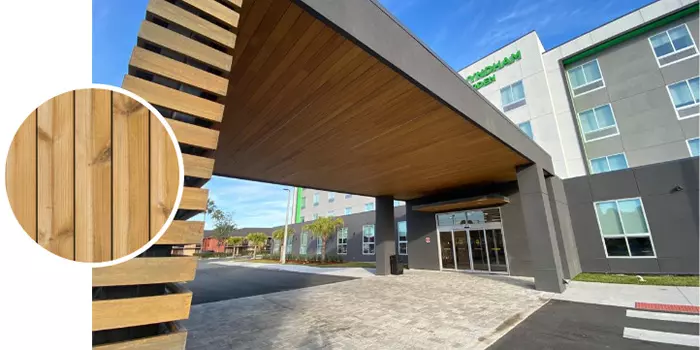
The low maintenance and durability factor makes thermally modified wood cladding an excellent choice for commercial buildings. It can withstand heavy usage, and its unique aesthetics can help businesses stand out.
Outdoor Furniture
Thermally modified wood is also an excellent choice for outdoor furniture. It can withstand harsh weather conditions and it resists decay, to help ensure that your outdoor furniture lasts and keeps looking new.
Fencing and Decking
Thermally modified wood cladding can be used for fencing and decking applications, and it is a beautiful, durable, and eco-friendly alternative to traditional materials.
Public and Community Buildings
Public buildings such as community halls, libraries, or schools can also benefit from using thermally modified wood cladding due to its resilience and low maintenance needs.
The versatility of thermally modified wood cladding allows its integration into various architectural styles, from contemporary urban structures to rustic countryside dwellings. Its unique characteristics bring warmth and harmony to exteriors that complement other materials like glass, stone, or metal.
Lumber Plus for a Range of Thermally Modified Wood Cladding
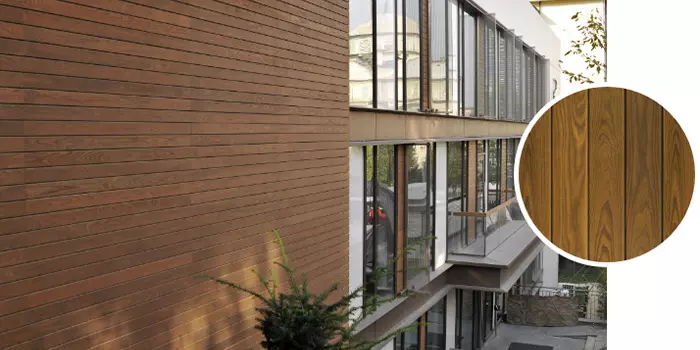
Lumber Plus, as a visionary leader in the industry, recognizes the superior qualities of thermally modified wood and offers an extensive range of cladding options that cater to various architectural needs. Their product line promises not only high-performance cladding, but also an elegant, natural aesthetic that is hard to replicate, to help ensure that every building exhibits a unique character.
Their range of thermally modified wood cladding products is diverse in terms of species, textures, and finishes. This variety enables homeowners, architects and builders to select materials that align perfectly with their design vision while maintaining the structural integrity and sustainability commitments of their projects.
Choose Lumber Plus for Unmatched Elegance in Thermally Modified Wood Cladding
Don’t settle for less when it comes to enhancing the exteriors of your property. Embrace the natural elegance, superior durability, and environmentally friendly advantages of thermally modified wood cladding. Lumber Plus is your partner in transforming architectural dreams into reality.
Explore our diverse range of thermally modified wood cladding options today and elevate your building project with sustainability, durability, and unmatched aesthetic appeal.
Contact us today to learn more about our other decking and siding products, or request a catalog to see our entire product line!
